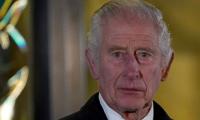There has been much talk about Pakistan’s current account deficit, but this is not the only economic facet in which the country is precariously placed. The old debt problem has not gone away. If anything, it has never been worse. The country’s total debts have hit Rs28.861 trillion, around 86.8 percent of the country’s GDP as of June 30 this year. This means that every individual in the country now owes Rs144,256 each. There was much talk about the increase in public debt during the last government, but it did little to deter it from bridging its finance gap. Pakistan’s external debt alone has increased to $95.097 billion, making up almost 33.6 percent of Pakistan’s GDP. This alone remains a major downer for the country’s current account since it paid around $7.5 billion in debt servicing in the last fiscal year. The approach of governments has been to take more loans to service old loans. This only adds more debt obligations and increases the debt repayments made every year.
While debt is an essential part of how all countries finance their public spending, the trick is to be able to understand the difference between healthy and not-so-healthy debt. Domestic loans come with the caveat that they could increase inflation rapidly as domestic interest rates tend to be higher. Foreign loans eat up foreign exchange reserves quickly, which require rapid replenishing. Either is a burden that is hard to shake off once a country is stuck in the cycle. There is no way a developing country can get rid of an IMF loan — unless it replaces it with another bigger IMF loan. This is one of the key dilemmas that the new government faces.
The risk of default remains high unless Pakistan finds bridging loans, for which the country is looking to China and Saudi Arabia. Again, if Pakistan gets the $10 billion it has asked for, these would add to the country’s debt obligations. However much the economy could be improved, Pakistan will not be making a net gain in its current account any time soon. This means new loans will need to be sought every year in the foreseeable future. Improving domestic tax collection is a good way to service domestic debt, but the more important thing is to find a way to reduce the net debt Pakistan has. In the short term, debt can allow a government to spur new public spending, but eventually, new debt is taken to service old debt. Public development spending was reduced in the last fiscal budget simply because the bulk of Pakistan’s budget goes into servicing its current debt. Pakistan will need to target bringing the debt-to-GDP ratio down to 60 percent to bring it back within a relatively healthy balance. Let’s see how the new government approaches this issue.
India's Prime Minister Narendra Modi speaks after releasing the Bharatiya Janata Party's manifesto ahead of country's...
Prime Minister Shehbaz Sharif, Pakistan Poeples Party Co-chairperson Asif Ali Zardari, JUI-F chief Maulana Fazlur...
Shahzaib Rind, Pakistan's martial arts fighter from Quetta. — Facebook/shahzaibrindhofficial/FileShahzaib Rind has...
A representational image showing women at a market. — AFP/FileIn the six weeks since he assumed office, not only has...
Country witnessed 432 violence-linked fatalities and 370 injuries among civilians, security personnel, and outlaws
During Raisi’s visit, Iran and Pakistan signed a total of eight accords on varying subjects to enhance cooperation...







